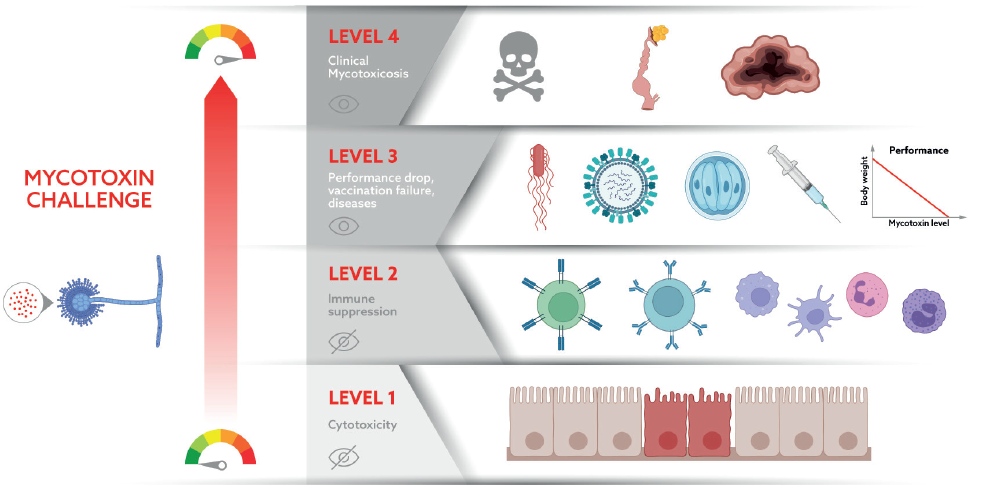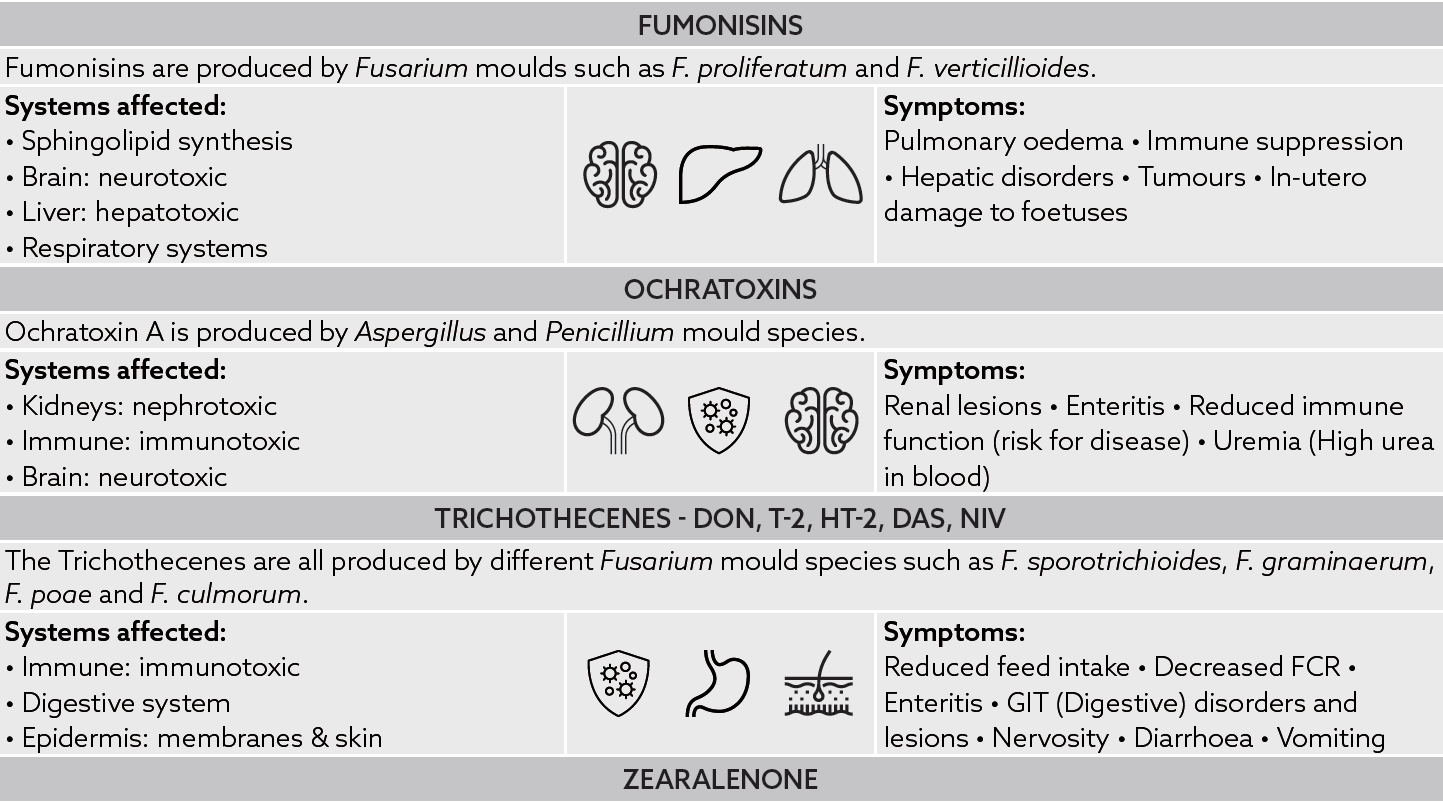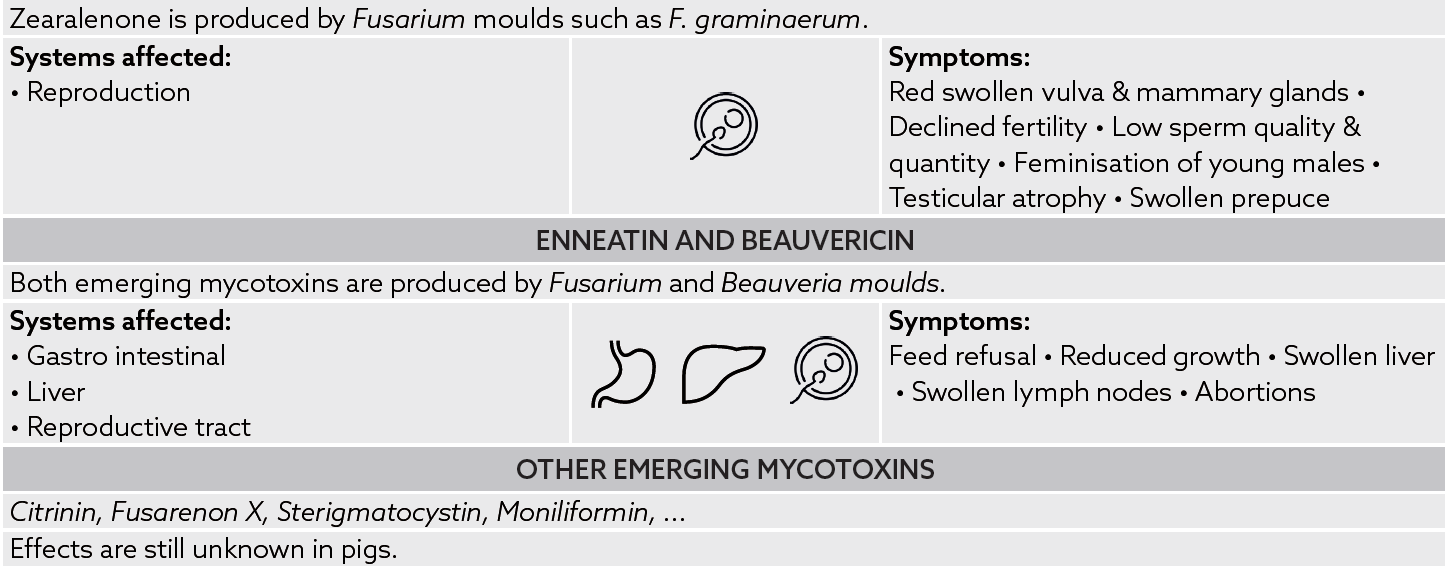Mycotoxins are chemical compounds produced by moulds. These compounds are toxic to animals and humans. Moulds produce mycotoxins as a defensive compound when they are in competition with other organisms or when the moulds are under stress.
Following moulds produce mycotoxins:
Mycotoxin facts
- Mycotoxins are invisible, odourless and heat stable.
- The effects of mycotoxins are often subclinical and are not noticed by farmers as a result. Mycotoxins are often only identified and managed after signicant herd production losses have occurred.
- When multiple toxins are present in the feed, increases in negative effects in animals may be observed, due to interactions between toxins and their metabolites.
- Some raw materials have higher risk for specific mycotoxins. High moisture raw materials and feeds have a higher risk for mould growth and thus also a higher risk for mycotoxins. Aflatoxins and Ochratoxins are more often found in protein rich raw materials such as peanuts, cottonseed, soya and maize products and by-products, while Fumonisins are common in maize and maize products for example.
- Mycotoxin occurrence is often seasonal, due to the effect of moisture and temperature on mould growth.
- Factors affecting mycotoxin pathogenicity (animal sensitivity)
- Health & stress levels of the animal
- Age of the animal
- Duration of exposure to mycotoxins
- Passage rate of feed
Only in case of severe significant contaminations, a clinical picture is observed on farm. Nowadays, due to the efficient screening and control of raw materials and feeds, the
occurrence of clinical mycotoxicosis is less prevalent. However, the impact of low to medium levels of mycotoxins are not to be neglected. Mycotoxins are cytotoxic, damaging the intestinal barrier, and are immune suppressive leading to a subclinical mycotoxicosis. Pigs will be more susceptible to diseases, vaccine programs could fail, performance drops are a real threat.

Less prevalent due to efficient control



Of most importance today

• Prevention of mycotoxin development by preventing mould development on crops as well as during storage of feed and raw materials. Use solutions to prevent mould growth. Monitor mycotoxins in high risk raw materials. Use a mycotoxin solution in feed to protect the animal.
• Management of the mycotoxins present by adjusting formulations. Use low inclusions of materials with high mycotoxin levels.
• Treat the mycotoxin problem by including mycotoxin solutions in the feed.
Interested in our solution to mycotoxin management?
TOXFIN® FARM; is the solution to protect the animal from all mycotoxin threats. It is an all-in-one strategy consisting of clay minerals, plant extracts, and algae beta-glucan to tackle the adverse effects of mycotoxins in animals. Read more on TOXFIN FARM here.© Kemin Industries, Inc. and its group of companies 2025 all rights reserved. ® ™ Trademarks of Kemin Industries, Inc., USA
Certain statements may not be applicable in all geographical regions. Product labeling and associated claims may differ based upon government requirements.